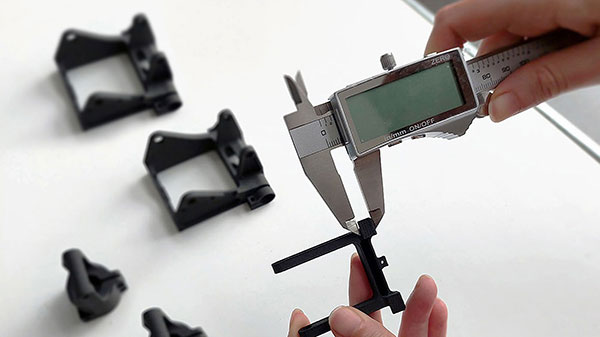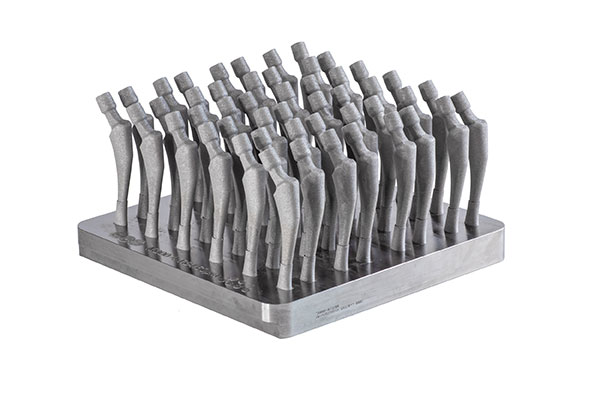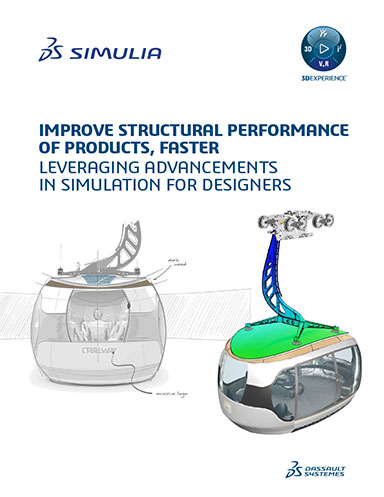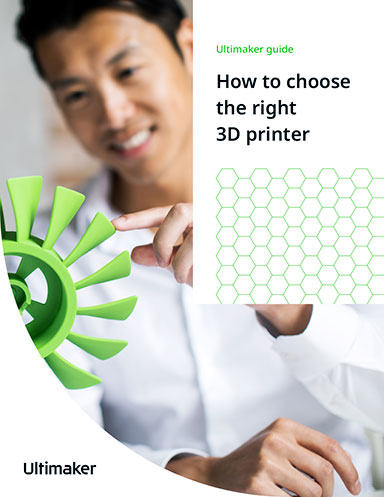Digital Tools Fuel Reshoring Revolution
AM and digital manufacturing tools are in the spotlight as companies localize and distribute manufacturing closer to home to build greater resiliency into their supply chains.

As part of the digital inventory managed on the Replique platform, OEMs can choose quality inspections to be performed on specific parts, ensuring consistency for decentralized manufacturing. Image courtesy of Replique.
Latest News
February 10, 2023
The years-long pandemic crisis and the Russia/Ukraine war have taken a toll on humanity and transformed geopolitics. These ongoing macro events have wreaked havoc on the global supply chain, prompting companies to increase digital tool use and on-demand manufacturing as they aim for greater resiliency and agility by reshoring sourcing and production.
Though supply chain snafus are certainly not new, their scale over the last few years has been unprecedented, crippling entire industries as companies struggled to source key parts in a timely fashion. Global logistics challenges, initially sparked by pandemic-era shutdowns, sparse availability of silicon chips and oil and gas shortages due to the war between Ukraine and Russia have only magnified the crisis.
Even as these challenges subside, companies are actively looking to replace or augment outsourcing strategies with reshoring efforts, including localizing and decentralizing manufacturing closer to demand, to avoid costly downtime and the missed revenue opportunities that characterized the last few years of business.
“We’ve had supply chain interruptions before, but they were relatively minor,” says Henrike Wonneberger, COO of Replique, which markets an encrypted 3D printing platform for spare parts management and small parts production. “There is a sense of urgency that caused upper management to realize it was time to rethink [sourcing] strategies and to look for alternatives to be better prepared.”
For years, manufacturers had gravitated to offshore sourcing and production primarily because of the cost advantage. Those strategies were turned on their head with years-long supply chain disruptions, prompting many companies to reevaluate and, subsequently, prioritize digital and on-demand manufacturing along with 3D printing and digital design tools. These technologies, deployed as part of a concerted effort to bring more resiliency and agility to operations, have traditionally been associated with a higher cost.
“Companies are starting to look at total cost of ownership (TCO) rather than the price of individual piece parts as they add up the costs of logistics, the people to follow up on logistics, and quality issues,” says Bryan Crutchfield, vice president and general manager, North America, at Materialise. “It’s revealed more AM use cases and put new emphasis on thinking about bringing things closer to home.”
The premium for AM technologies and sourcing and manufacturing strategies may be worth it as companies face continued sourcing and manufacturing challenges. A report released by Xometry and Forbes found the majority of CEOs interviewed (90%) fully expect supply chain challenges to stretch well into 2023. As such, 70% of those surveyed are planning to make capital investments in automation, workflow tools and artificial intelligence, to rectify and improve on their sourcing hurdles. Nearly two-thirds of the CEOs (64%) said they are currently or planning to reshore or nearshore operations. Fictiv’s 2021 State of Manufacturing Report revealed a similar swing: As companies move into a post-pandemic era, they are looking to future-proof manufacturing with reshoring (62%) and on-demand manufacturing strategies (84%), the report found.
“Everyone was very happy to get things from China cheap and predictably for the longest time and then when that didn’t happen, there was a scramble,” says John McEleney, co-founder of Onshape, a PTC business. “What’s happening now is companies are figuring out how to get the right product to the right customer in the shortest period of time. Hardware companies are trying to get more agile in their processes so they can be more responsive to customer needs, and iterating closer in the supply chain absolutely shrinks time to market.”
Key Enablers
Given the severity of recent supply chain disruptions, a wide array of government and commercial solutions are being marshalled to solve the problem. The Biden administration has been fairly aggressive in its supply chain response, shoring up cybersecurity vulnerabilities, greenlighting investment in modernizing transportation systems, and creating a portfolio of programs aimed at bolstering U.S. manufacturing in part through more accessible financing and training. The administration took specific aim at easing the debilitating chip shortage with the CHIPS and Science Act, a series of investments designed to promote next-generation semiconductor research, development and manufacturing in the United States.
On the 3D printing front, the Additive Manufacturing (AM) Forward Initiative is a commitment by large manufacturers such as GE Aviation, Honeywell, Lockheed Martin, Raytheon and Siemens Energy to purchase AM-produced parts from smaller U.S.-based suppliers. The program is intended to create more resilient and innovative supply chains and promote reshoring.
“AM allows firms to respond quickly to supply disruptions without holding costly inventory of parts that may not ultimately be needed,” the White House said as part of the materials released during AM Forward’s May 2022 launch. “With 3D printing, parts can be printed and delivered within hours or days after they are ordered. This reduced lead time benefits aerospace and other industries that have been stymied by bottlenecks in forging and casting supply chains.”
Many companies in the automotive, medical and aerospace sectors have already embraced AM for production of newly designed parts, leaning into the technology for parts consolidation or to create lighter weight, more organic shapes and conformal cooling channels that are simply not possible with traditional production methods. A more recent trend has companies turning to AM as a primary or secondary means of production for existing parts, specifically to circumvent some of the more egregious supply chain hurdles.
“Organizations are figuring out that if they can decrease their warehouse stock and think about how to strategically place manufacturing sites, they can solve their logistics problems while saving money on manufacturing and supplying goods to end customers,” says Greg Hayes, senior vice president, applied technology for EOS.
EvoBus GmbH, a subsidiary of the Daimler Group, is one such EOS customer using 3D printing to ease spare parts management challenges, especially since the bus industry must maintain parts supplies for over 15 years. Working with EOS’ Additive Minds consulting group, EvoBus initially identified 2,600 spare parts that were suitable for AM; as the initiative evolves to include more parts, AM has helped shorten lead times for customers and avoid unproductive downtime of buses.

More recently, EOS is supporting U.S. Navy partners to reshore and improve their manufacturing supply chains in the U.S. The EOS Additive Minds team is engaged to help with supply chain qualification, as well as training and workforce development. Hayes says many players in sectors such as aerospace and medical implants are gravitating towards AM as part of their build or buy decision-making process around sourcing, opting to manufacture their own parts to promote nearshoring versus relying on far-flung outsourced suppliers.
Using AM as part of an on-demand, decentralized manufacturing strategy is also gaining in popularity to reduce supply chain woes, according to Replique’s Wonneberger. Through the Replique 3D printing platform, companies can store spare part designs as digital inventory while leveraging the company’s global 3D printing network to produce parts securely on demand and closer to the customer, saving time and money.
The company’s latest platform addition, RSure, is a quality tracking module that lets companies track 3D printed parts directly, ensuring they meet the necessary quality requirements regardless of where the part is printed or what partner is doing the printing.
“If you are manufacturing in different places, you don’t have to go to a central warehouse to do inbound quality assurance,” he says. Companies define a quality protocol that suppliers need to adhere to and it’s stored with the digital inventory. “You either have to document processes and make things transparent or you need to trust, and in an industrial environment, you need to go with the first,” Wonneberger says.
As supply chain issues ease up, there are many companies that are stuck with too much inventory having ramped up significantly during the pandemic. Here, too, digital manufacturing and on-demand capabilities can enable just-in-time production in a volatile market.
“3D printing for parts of the supply chain can be quicker and allows companies to be nimbler,” says Jason Fullmer, chief operating officer of Formlabs. Some companies are running 80% of their supply chain offshore in a low-cost environment and 20% nearshore using AM to react to the fluctuations in demand and the market, he says.
“Digital manufacturing enables localization and consistency while on-demand manufacturing takes out queuing and inventory processes that don’t fit some businesses like those creating personalized products,” Fullmer explains.
Hasbro, in partnership with Formlabs, is leveraging AM to empower the new Hasbro Selfie Series custom action figure product line and to embrace localized manufacturing. Customers scan their face and customize their character on a mobile app, and the custom action figurehead design is output on Formlabs stereolithography (SLA) 3D printers in the U.S. However, the action figure bodies are still mass produced in low-cost production centers overseas, Fullmer says.
“This lets them manufacture on shore for a reasonable cost structure,” he says.
Challenges and Best Practices
As organizations move forward with on-demand and digital manufacturing, they face various challenges, from educating the workforce and recruiting talent versed in the new technologies and business models to creating AM workflows that can scale with production.
Since 3D printing has been rooted in prototyping and small-volume applications, many companies need help scaling workflows and 3D printing processes to work for full production use cases, notes Formlabs’ Fullmer.
“It’s not different technology, but different workflows to deal with volume,” Fullmer explains, adding that Formlabs is planning to release software that helps companies better manage fleets of printers and print jobs as well as capabilities to simplify and facilitate post-processing steps.
Materialise is also focused on facilitating workflows to promote AM use, especially for companies considering the technology as a tool for decentralized manufacturing and reshoring strategies. The company’s CO-AM open, cloud-based platform is designed to help manufacturers scale and secure AM workflows, including creating and maintaining a digital inventory and managing orders from one central system.
“It creates a dynamic, flexible network to help overcome supply chain disruptions,” says Crutchfield. Given the breadth of data associated with digital manufacturing, companies will need a platform capable of storing and managing data while facilitating the workflows to drive consistency, quality and security of data across an extended value chain, he adds.
Beyond workflow, training the workforce on AM and digital manufacturing technologies and encouraging companies to move beyond the status quo is central to ramping up AM use to support localized and on-demand manufacturing models.
“Use of digital technology is accelerating because everyone now sees what disruption can cause,” says Gurvinder Singh, director of product at Protolabs. “When it comes to the supply chain, being agile and flexible has become so much more important going forward.”
More EOS Coverage
More Formlabs Coverage
More Materialise Coverage
More Onshape Coverage
More Protolabs Coverage
Subscribe to our FREE magazine, FREE email newsletters or both!
Latest News
About the Author
Beth Stackpole is a contributing editor to Digital Engineering. Send e-mail about this article to [email protected].
Follow DE





